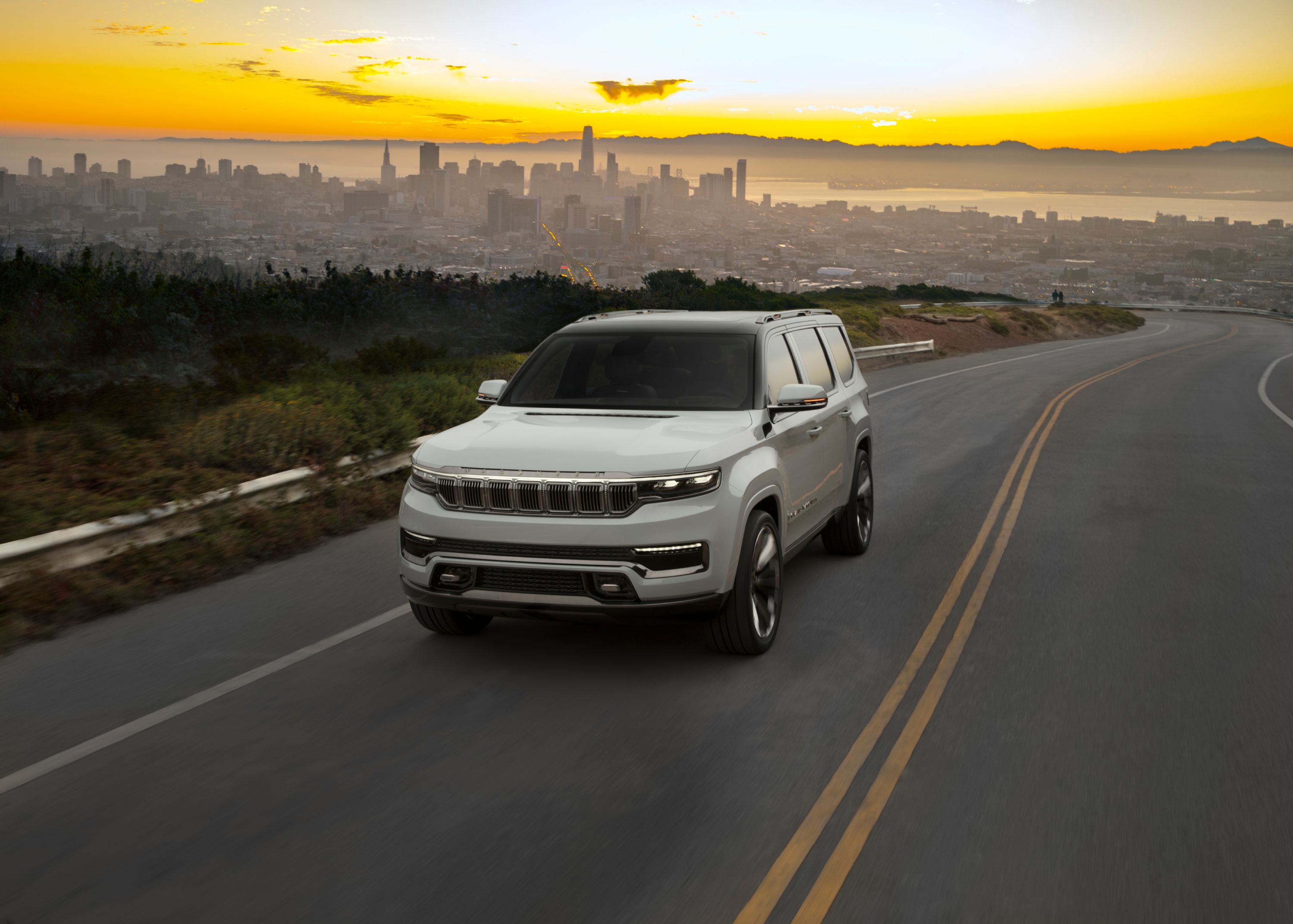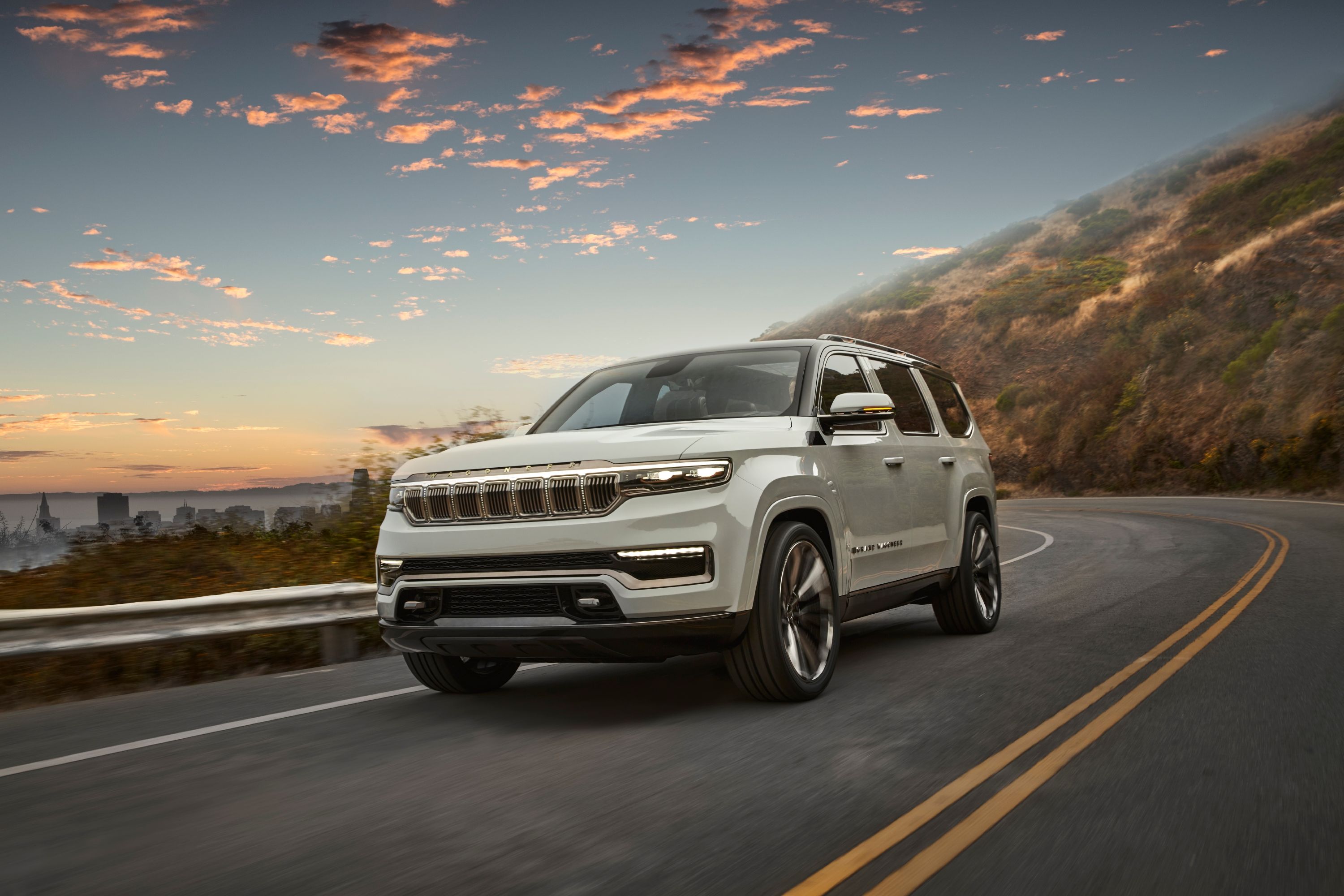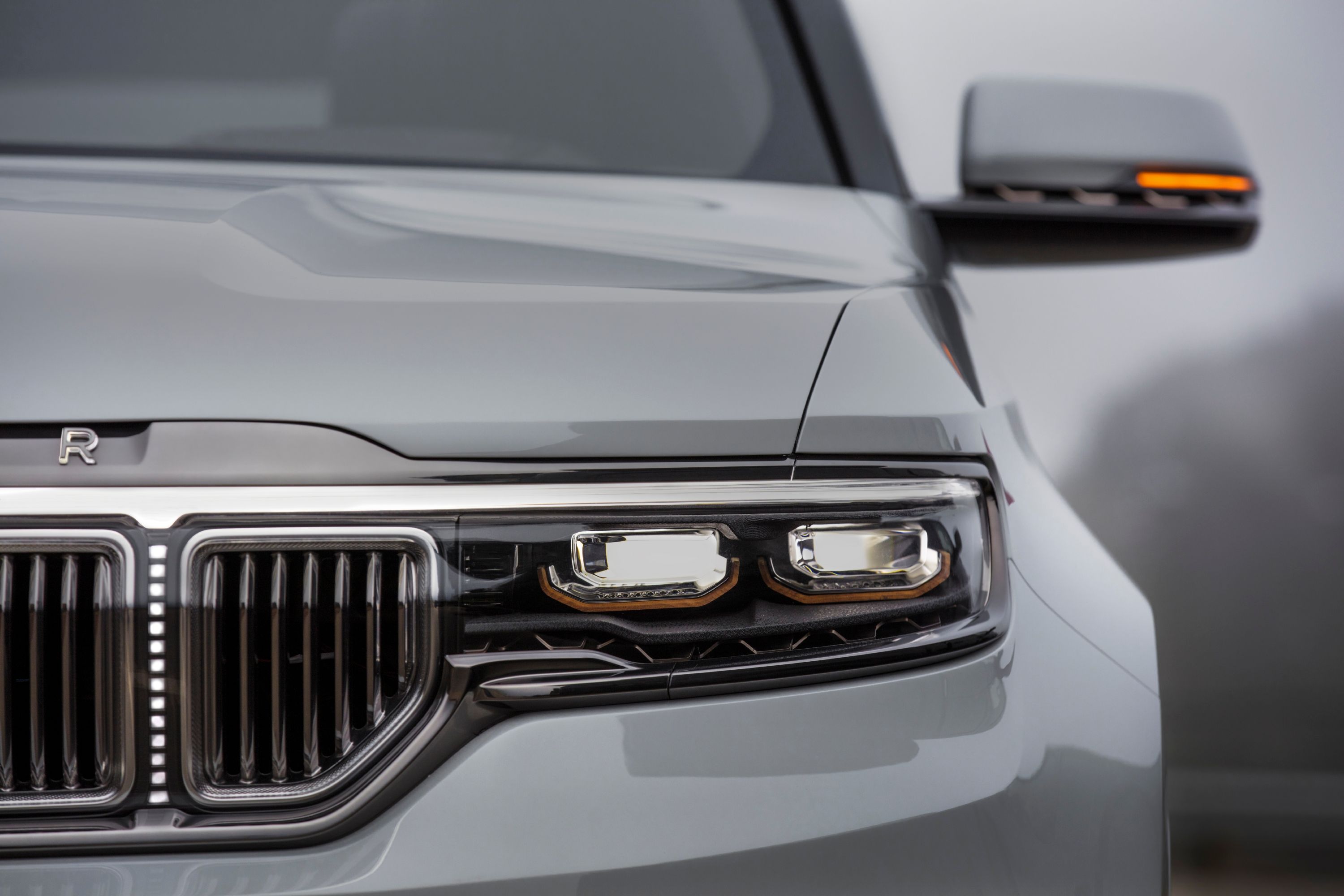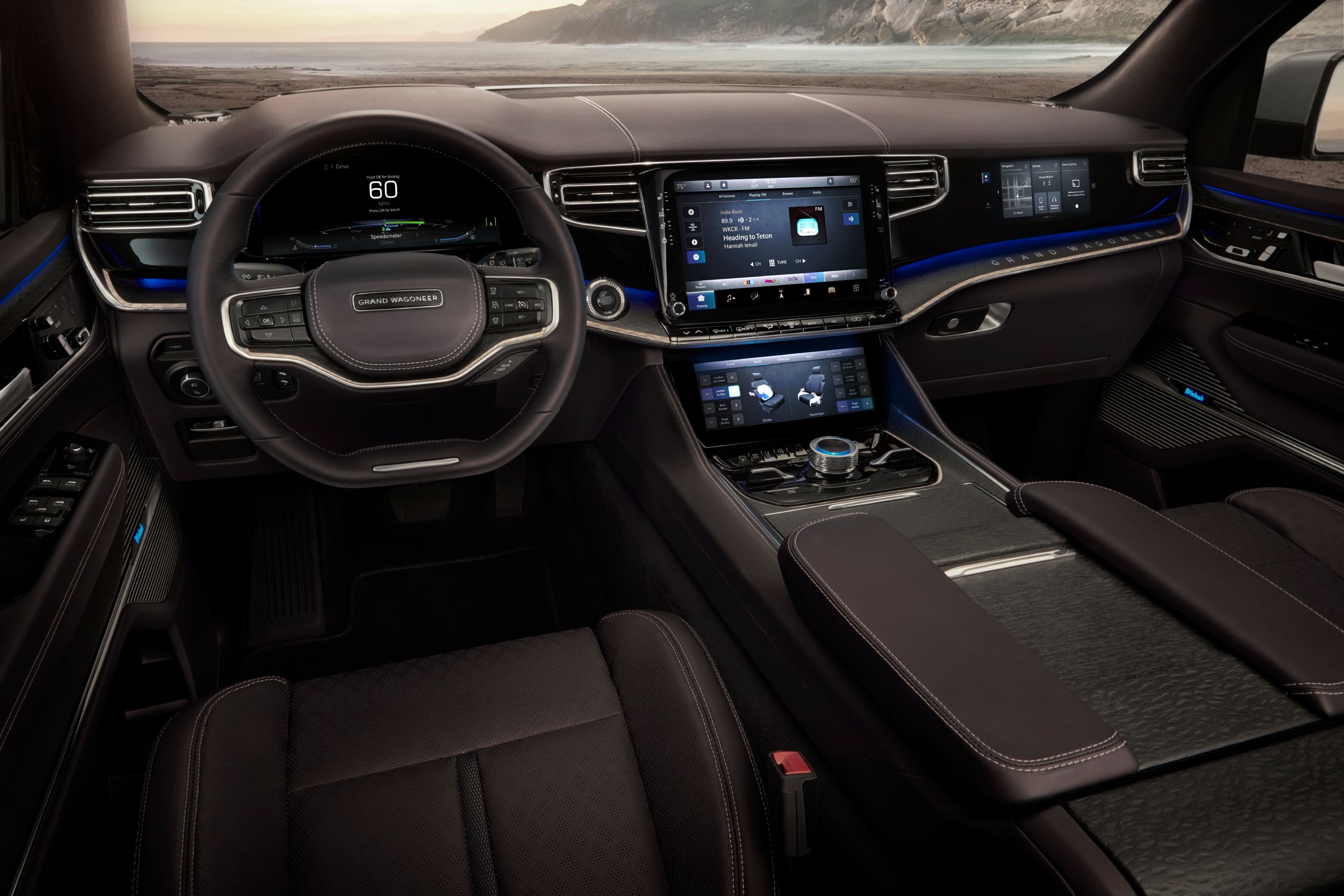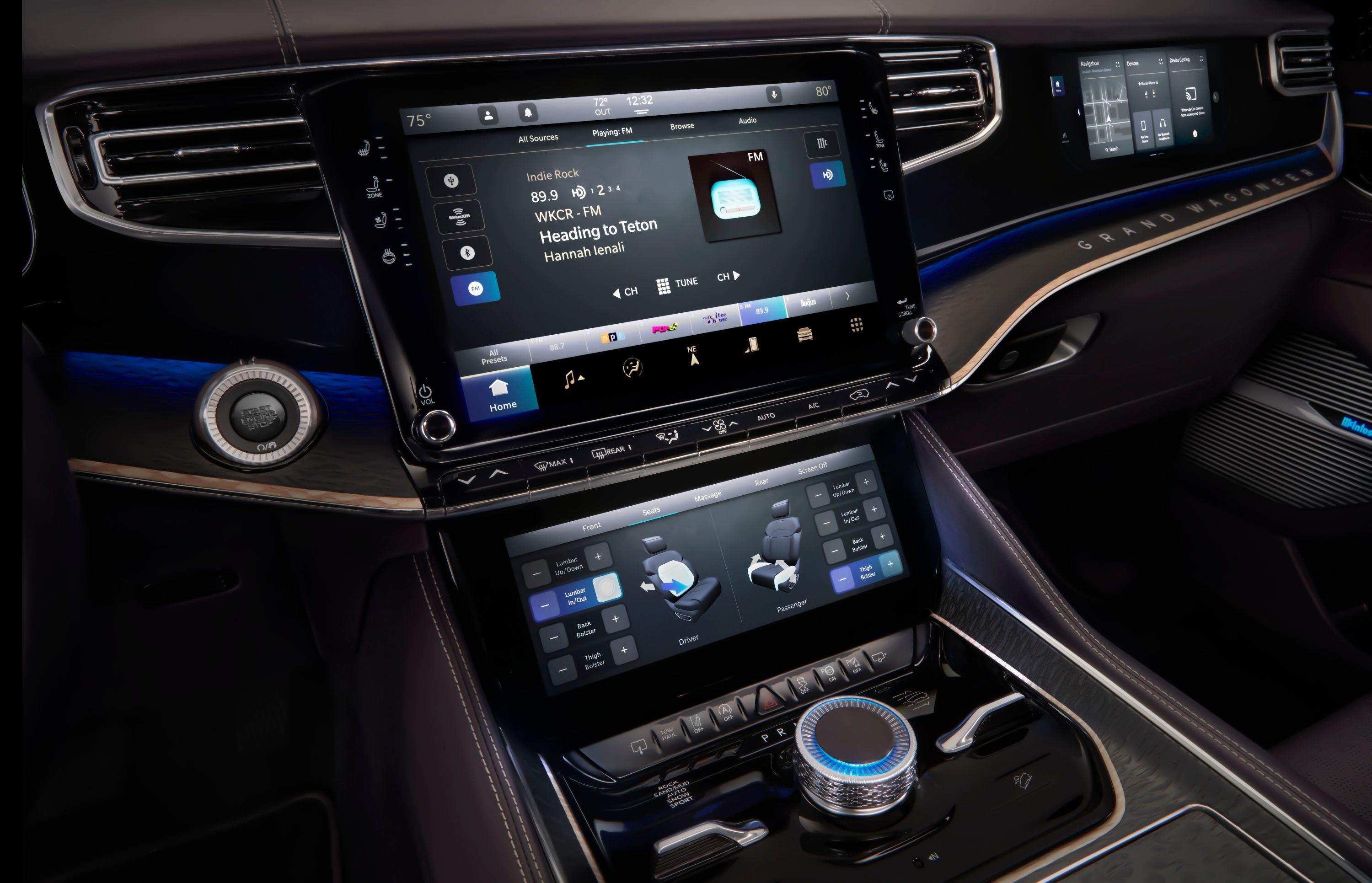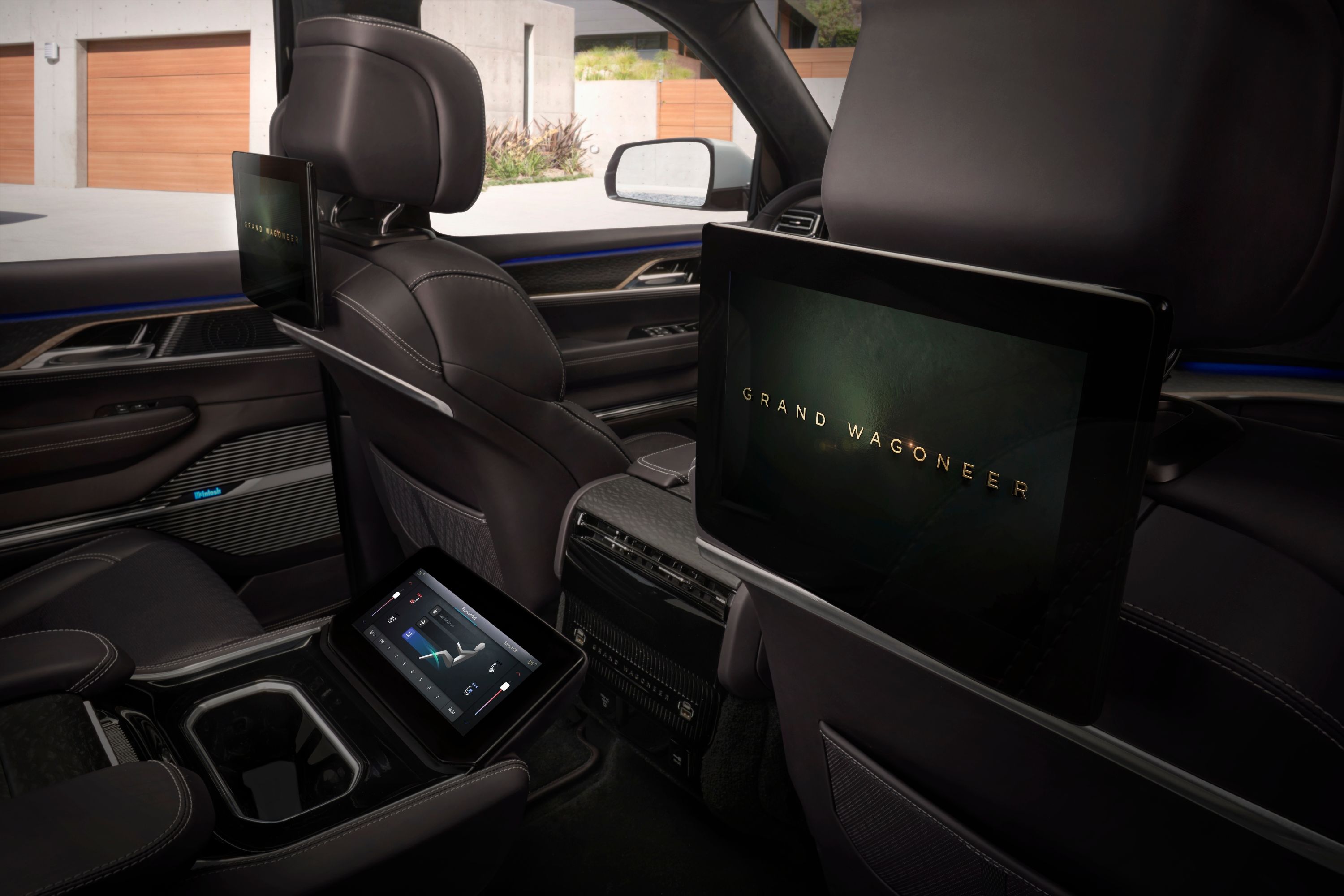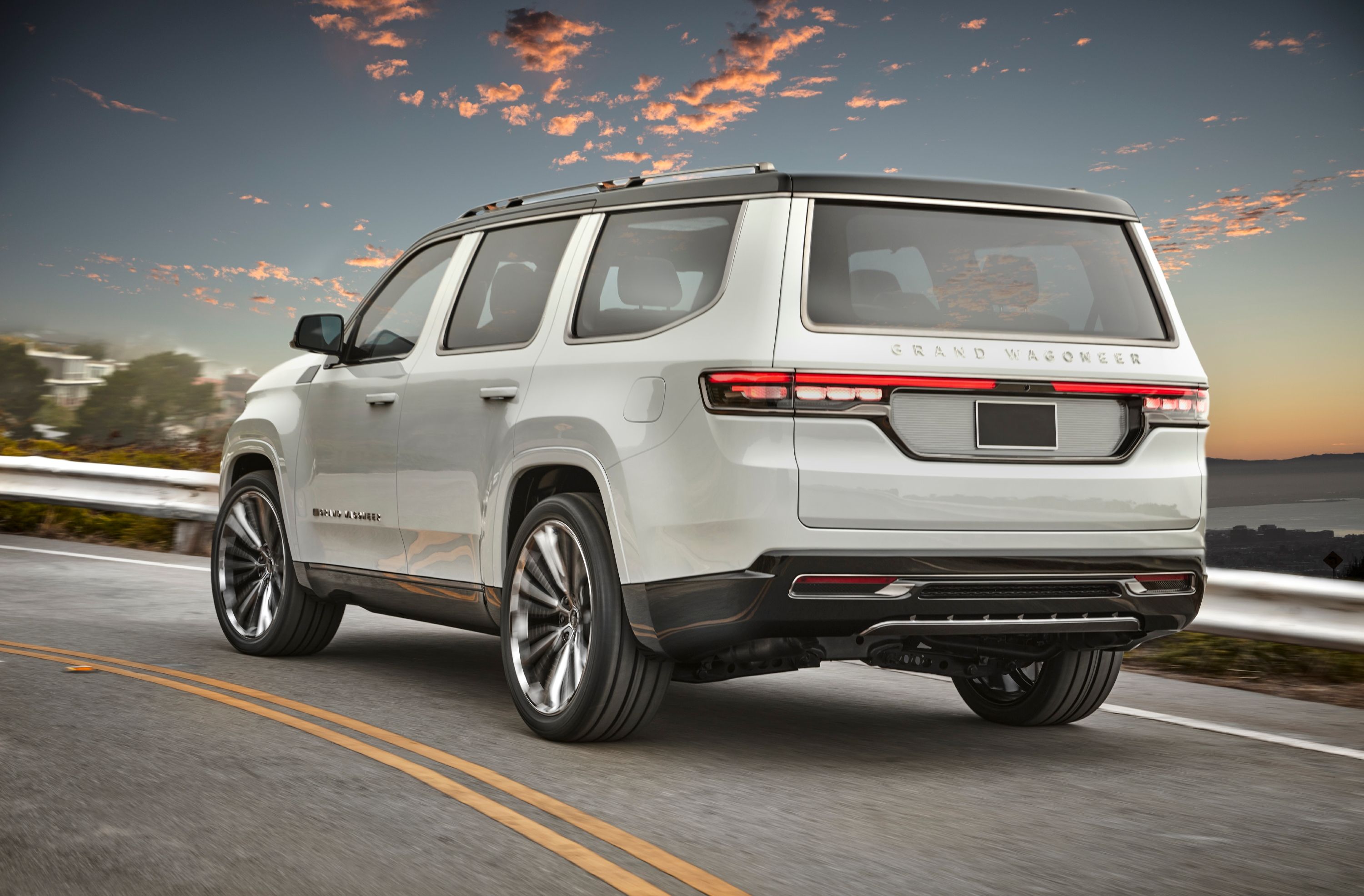After a number of teasers and glimpses of the SUV, the Jeep Wagoneer is finally here. The company has unveiled the concept Jeep Wagoneer digitally. The SUV was in production for three decades, between 1961 to 1981, it was then sent to an exile only to be brought back again for a second run.
Test mules were spotted in 2019 and the automaker confirmed that the nameplate is being reincarnated for the same role it played in the last century. Yesteryear monikers generally receive a lot more attention than new names but also have a lot of hopes pinned on them.
Given how competitive the SUV segment has become in the recent past, can the Wagoneer stand out, or will it become just another name that didn’t bring in volumes for the automaker?
How Is It On The Outside?
Up front, there are slim headlights wrapped in a rather garish chrome grille that retains Jeep’s signature seven slots. The space above and between the slots features LEDs that form a distinct design of its own.
The LED projector headlamps are cradled by teak wood. “Wagoneer” lettering is present on the grille, but surprisingly, it doesn’t feature the “Jeep” script. The bumper features a lot of black elements that add to the rugged vibes of the SUV. But, that said, there’s no dearth of chrome anywhere. This SUV will draw a lot of attention.
When viewed from the rear three-quarters, it has an uncanny resemblance to the Rivian R1S and the Lincoln Navigator to an extent. The Wagoneer rides on 24-inch, multi-spoke, Obsidian-finished aluminum wheels featuring 3D-printed elements. This could be offered as an optional size on the production version. Just like most of the Jeeps, this one, too, features the moniker on the front doors.
Step to the rear and the boxy nature is evident. The LED taillights start from the rear quarter panel and run all the way till the other end, forming a near straight LED bar which is common on electric vehicles these days. The bottom part of the bumper is finished in black and even features a skid plate. A subtle rear diffuser sits below the tailgate and aids in the SUV’s aerodynamics.
How Is On The Inside?
The two-spoke, flat-bottom steering features ‘Grand Wagoneer’ instead of ‘Jeep’ on it. We’ll have to see if this continues onto the production version as well. There are a lot of leather and wood elements and accents on the inside to give a premium feel. Jeep has also made use of a lot of sustainable material in here like onyx glass, 3D lacewood inlays, dinamica, etc.
The cabin showcases seven different information screens.
Behind the steering wheel is a 12.3-inch instrument cluster that is expected to display a plethora of information. It can be controlled using the buttons mounted on the steering wheel. Overall, the cockpit is very intriguing and will keep the driver happy.
The center console is flanked by a 12.1-inch touchscreen that runs on the UConnect 5 infotainment system. There is a 10.25-inch “comfort display” below it, separated by an aluminum wing that houses the seat controls and four-zone climate control system. There’s another 10.25-inch touchscreen system on the dash on the passenger side.
The second-row has two captain chairs and a massive center console in between that features another 10.1-inch display screen. Both the passengers also have their own screens of the same size. Phew! The Grand Wagoneer Concept showcased a 23-speaker McIntosh audio system, including a 24-channel amplifier to fulfill the cravings of an audiophile. With oodles of space and high tech features, the Jeep Grand Wagoneer’s cabin is as modern and advanced as it can get. Now, we need to wait and watch how many of these features make it to production and how the trims will be spec’d.
What’s Under The Hood?
Surprisingly, Jeep hasn’t let out these details yet. The Concept Grand Wagoneer features a plug-in hybrid powertrain that is said to be “in line with the Jeep brand’s plans to offer electrification options on all models in the next few years”. FCA has a lot of engines in its portfolio, so deciphering what could power the Grand Wagoneer is not the most ideal option. However, if we had to narrow it down, we’d say it could feature an upgraded version of Ram’s 5.7-liter, V-8 mild-hybrid eTorque engine, since there seems to be a lot of part sharing. A V-6 for such a big SUV doesn’t sound very promising, but Jeep could borrow the hybrid mill from the Pacifica Hybrid. Or, a new plug-in hybrid powertrain could make its way in here.
It goes unsaid that the Grand Wagoneer will be heavy on off-road tech. There’s no reason why stuff like four-wheel-drive systems, air suspension, and so on will not be featured here. As for the towing capacity, it needs to be around 9,000 pounds to stay in line with the competitors.
Final Thoughts
Jeep hasn’t announced the pricing of the SUV, but the brand’s president, Christian Meunier, has said that a fully-loaded SUV will go north of $100,000. But, to keep it on par with the competition, expect the Wagoneer to start somewhere around $60,000. The Jeep Wagoneer will start arriving at dealerships in mid-2021 as a 2022 model year.

